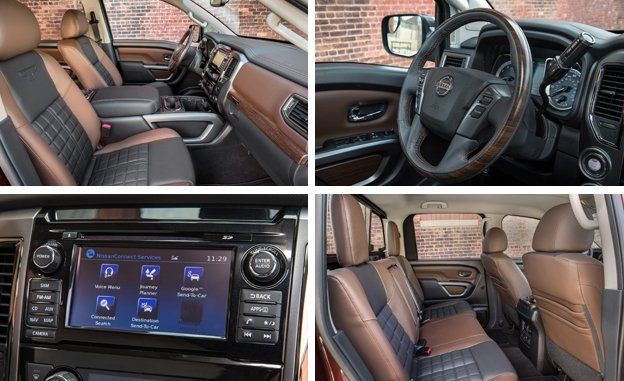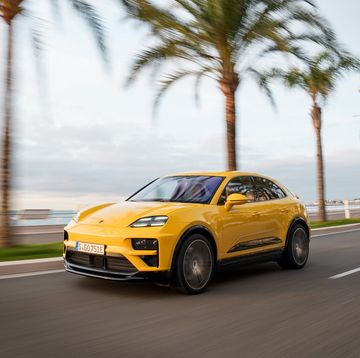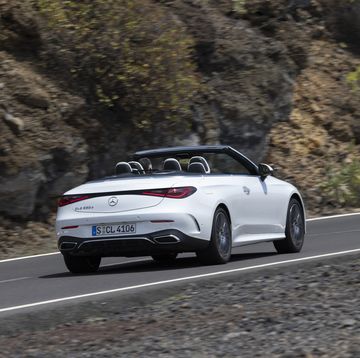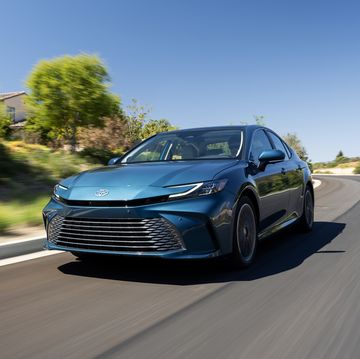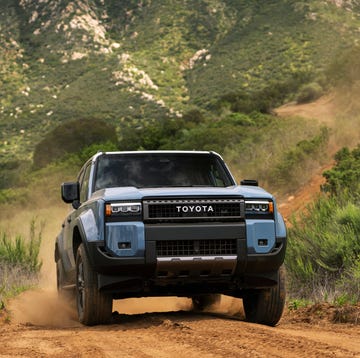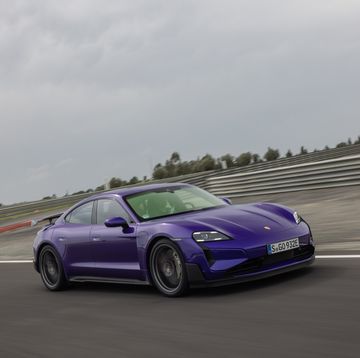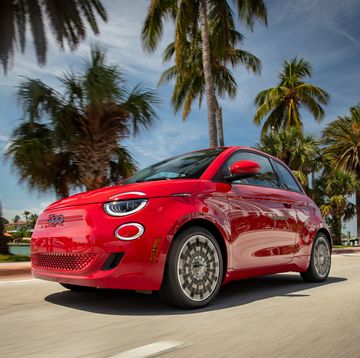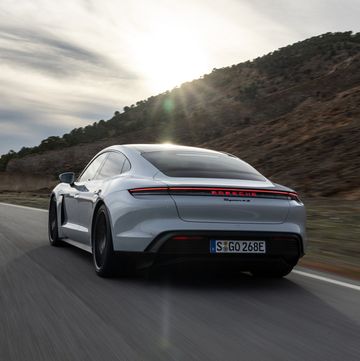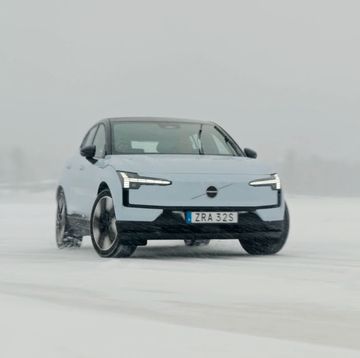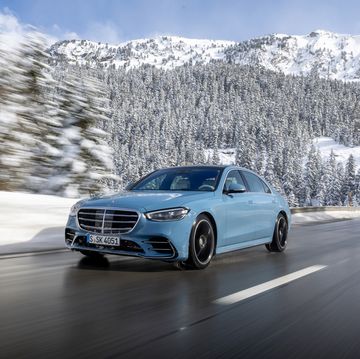When Nissan brought the original Titan to market for the 2004 model year, it was intended as a coup against the full-size-pickup status quo. But it failed to pull many buyers away from the dominant American brands. Years of neglect, with only minor updates over the course of its 12-year run, did this pickup no favors. Now, an all-new Titan sets out not to pick up where its predecessor left off, but to finally truly challenge the domestic brands.
Actually, despite its Japanese nameplate, the Titan is an American product, with teams from Tennessee, California, Michigan, Arizona, and Mississippi all contributing to its development. To bolster the Titan’s chances in what is arguably the auto industry’s most competitive—and most profitable—segment, Nissan has endowed it with far more configurations and powertrain options, including an updated 5.6-liter V-8 engine built in Tennessee. Final assembly happens at Nissan’s plant in Canton, Mississippi, alongside its heavier-duty counterpart, the Titan XD.
The assembly line isn’t all that the half-ton Titan, starting at $35,975, shares with the Titan XD—the cabin and headlamps are common—but Nissan says each truck has its own body panels, chassis, and suspension components. The Titan’s wheelbase is almost a foot shorter than the XD’s, and overall length is down by 14.7 inches for the Crew Cab model. The styling of the half-ton Titan is certainly inspired by the XD, with a blocky, chrome-laden grille, bulging front fenders, lightly sculpted body sides, and an overall similar silhouette. Initially offered as a four-door Crew Cab with a 5.5-foot bed, the half-ton Titan will add Single Cab and King Cab variants in early 2017. Nissan also plans to offer two additional engines, a V-6 and a diesel V-8, but isn’t talking specifics about those just yet.
Luxury Liner
We drove both off-road-themed PRO-4X and super-luxe Platinum Reserve trim levels. The cabin is quiet and features well-chosen materials throughout. Although the dashboard is peppered with buttons, most of the controls are logically placed. The handsome silver-rimmed gauges are easy to read at a glance; a reconfigurable digital display in the cluster provides a trip computer and shows vehicle information such as tire pressure and fuel economy.
A front bench seat is standard on S and SV models; the front buckets that are standard on the rest of the lineup flank a large center console that features two deep storage bins and a wide center armrest. The seats are thickly cushioned and supportive and should offer excellent long-haul comfort. Rear-seat accommodations are equally plush in these four-door Crew Cab models, especially in the leather-lined Platinum Reserve. An optional storage bin under the rear seat is a handy place to stash tools and other small items and provides a wide, flat platform to haul larger items when the bottom cushion is flipped up.
All Titan Crew Cabs come standard with a touchscreen infotainment system, a modern-day must-have, but their relatively small screens—either 5.0 or 7.0 inches depending on trim level—and rectangular shape crowd the touch-sensitive controls, impeding on-the-go use. By contrast, the Chevrolet Silverado and GMC Sierra’s available 8.0-inch screen and the Ram 1500’s even-larger 8.4-inch display dwarf the Titan’s readouts. The software isn’t as intuitive as the GM and Ram systems, either, but it does offer most of the same connectivity options (except for Apple CarPlay or Android Auto capability, neither of which is available on the Nissan).
Loaded up and Truckin’
On the road, the 390-hp 5.6-liter V-8 moves the Titan along purposefully, although initial throttle response can be sleepy. The engine is mostly free of harshness, and at full chat the exhaust note is a light, civilized bellow. The seven-speed automatic transmission, operated by a long column-mounted lever, provides smooth gearchanges but is slow to downshift in response to throttle inputs. A maximum towing capacity of 9390 pounds and a payload rating of up to 1610 pounds are both class competitive, although neither gives the Titan bragging rights. Similarly, Nissan’s estimated fuel-economy ratings of 15 mpg city and 21 mpg highway put the Titan about midpack, despite aerodynamic features such as automatic grille shutters.
Except for some small blind spots caused by wide A-pillar bases, outward visibility is clear of major obstructions. The Titan’s squared-off hood is always in view but doesn’t hinder forward vision. Two large and square exterior mirrors, plus a smaller convex mirror mounted beneath the right-side mirror, offer a clear look at adjacent lanes of traffic and should also provide a good field of view when pulling a trailer. Telescoping mirrors are optional on all but the base S models and standard on Platinum Reserve models.
Like its competitors, the Titan generally does not like to be hustled around corners; instead, the steering and suspension are tuned for work and comfort. Abrupt dips in the road send the Nissan on an unusually long up-and-down jounce-and-rebound cycle before it finally settles down. The PRO-4X model, which gets upgraded suspension components including Bilstein dampers, somehow manages to suffer from both a harsher ride and the same reluctance to settle, or too much compression damping and not enough rebound. Curiously, the brake pedal on the Platinum Reserve was firm, but the PRO-4X’s pedal felt much softer. We’ll formally test braking, acceleration, and skidpad performance as soon as we can get a Titan to our track.
Although Nissan’s first stab at a full-size pickup failed to set the market on fire, it did help drive the industry forward. The Ram 1500 can now be had with integrated bedside cargo boxes, an evolution of the in-fender storage bin that the original Titan help popularize, and General Motors’ truck twins, the Chevrolet Silverado and the GMC Sierra, offer an in-bed cargo management and tie-down system cribbed from the Nissan playbook. The new Titan retains both of these as optional features, and while it’s clear that Nissan has clearly spent time benchmarking its rivals, it hasn’t put as much effort into innovations this time around. The Titan seems well aligned with its domestic competition, but to win the hearts—and wallets—of highly loyal American pickup-truck drivers, simply matching the incumbents may not be enough.
Specifications
Drew Dorian is a lifelong car enthusiast who has also held a wide variety of consumer-focused positions throughout his career, ranging from financial counselor to auto salesperson. He has dreamed of becoming a Car and Driver editor since he was 11 years old—a dream that was realized when he joined the staff in April 2016. He’s a born-and-raised Michigander and learned to drive on a 1988 Pontiac Grand Am. His automotive interests run the gamut from convertibles and camper vans to sports cars and luxury SUVs.


